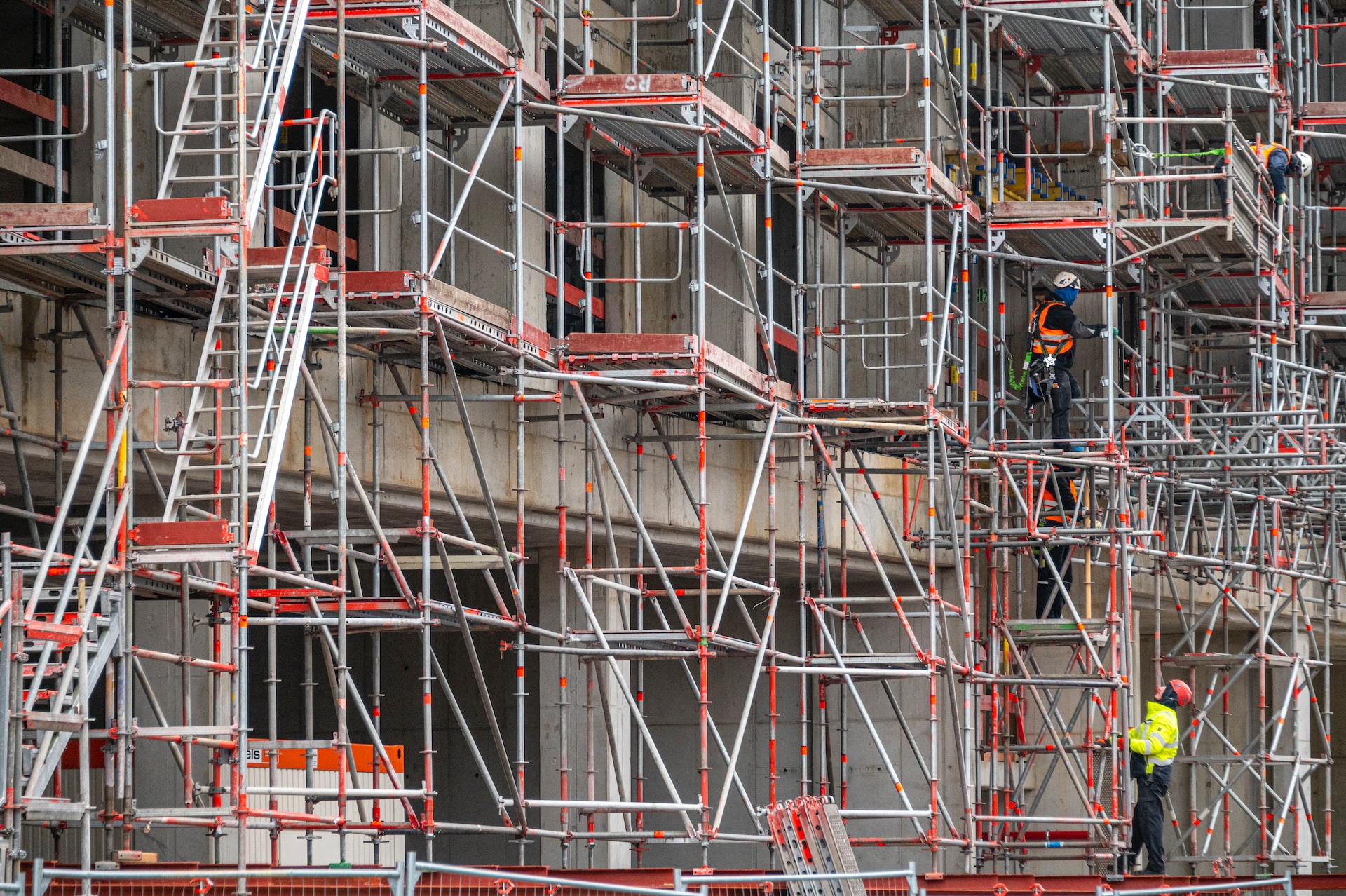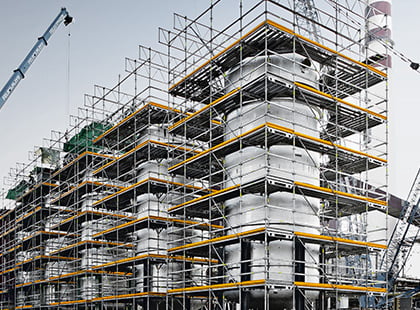Exploring the Numerous Kinds of Scaffolding Made Use Of in Construction Tasks
The building and construction sector depends heavily on various kinds of scaffolding to fulfill certain job requirements, each offering distinct benefits and applications. Standard framework scaffolding offers a sturdy structure for basic tasks, while suspended scaffolding is crucial for job on skyscraper structures. Various other alternatives, such as system and rolling scaffolding, cater to efficiency and mobility, specifically. The cantilever alternative shows invaluable in city atmospheres where room is constrained. Understanding the subtleties of these scaffolding types is crucial for optimizing safety and security and performance on construction sites, motivating a better examination of their special characteristics and applications.

Typical Framework Scaffolding
Traditional frame scaffolding is among one of the most commonly used techniques in the building industry due to its robustness and convenience. This system is composed of horizontal and upright structures that are set up to produce a stable system for materials and employees. The primary elements include upright articles, horizontal journals, and angled braces, which with each other supply a solid framework that can sustain significant lots.
One of the key benefits of traditional framework scaffolding is its adaptability to different building and construction jobs, varying from domestic structures to large industrial frameworks. The modular design enables for very easy assembly and disassembly, making it effective for both long-lasting and temporary projects. In addition, the system can be personalized in elevation and size, suiting different building layouts and website conditions.
Security is extremely important in scaffolding applications, and conventional structure systems are equipped with guardrails and toe boards to avoid drops and ensure worker security. Moreover, normal evaluations and adherence to security guidelines are critical in maintaining the integrity of the scaffold. Overall, conventional framework scaffolding stays an essential selection in the building and construction industry, providing a dependable system for labor and boosting total task performance

Suspended Scaffolding
Suspended scaffolding offers an unique remedy for building and construction jobs that need access to elevated surface areas, especially in situations where typical structure scaffolding may be impractical. This kind of scaffolding is usually suspended from the roof covering or upper degrees of a structure, making use of a system of ropes, pulley-blocks, and platforms to develop a functioning area that can be adjusted to various heights.
Among the main advantages of put on hold scaffolding is its flexibility. It can be quickly rearranged or reduced to accommodate adjustments in building and construction needs, making it suitable for tasks such as window installation, façade job, and maintenance on skyscrapers. Additionally, the very little footprint of put on hold scaffolding permits far better use ground room in city environments, where area is commonly limited.
Safety is an essential consideration in the usage of put on hold scaffolding. In general, put on hold scaffolding supplies a efficient and reliable service for accessing hard-to-reach areas in numerous building and construction situations, enhancing both efficiency and safety browse around here and security on website.
System Scaffolding
System scaffolding, frequently considered as a contemporary remedy in the scaffolding sector, is composed of pre-engineered elements that can be swiftly set up and adapted for various construction tasks. Scaffolding. This kind of scaffolding is defined by its modular design, which permits for adaptability and effectiveness on job websites, fitting architectural demands and different elevations
Normally made from high-strength steel or aluminum, system scaffolding offers boosted durability and security. The elements include upright blog posts, straight journals, and diagonal braces, which interconnect firmly, making certain a durable framework. The design usually incorporates standardized fittings, simplifying assembly and disassembly procedures, consequently minimizing labor time and costs.

Rolling Scaffolding
Rolling scaffolding is a versatile option to standard set scaffolding, made for mobility and ease of use on construction sites. This type of scaffolding contains a platform supported by frames with wheels, allowing employees to conveniently transfer it as needed. The movement feature considerably enhances performance, as it decreases downtime linked with disassembling and assembling fixed scaffolding.
Typically created from light-weight materials such as aluminum or steel, rolling scaffolding supplies a durable yet portable remedy for jobs requiring regular repositioning - Scaffolding. It is particularly helpful in tasks such as painting, drywall installment, and electrical job, where access to various elevations and locations is essential
Security is paramount in rolling scaffolding style, with features such as securing wheels to avoid unexpected motion when in operation, and guardrails to shield workers from drops. Additionally, several models are flexible in height, fitting numerous project demands.
Cantilever Scaffolding

The design of cantilever scaffolding usually includes utilizing arms or brackets secured to a structure or structure, allowing the platform to extend outward safely. Security is critical; therefore, these scaffolds should be crafted to endure different loads and environmental problems. Regular assessment and upkeep are important to ensure structural integrity and worker safety and security.
Cantilever scaffolding is favored for its flexibility and efficient use of area, making it a prominent option in metropolitan environments where room constraints prevail. It assists in easier access to high elevations, ultimately contributing to the general effectiveness of building tasks. As with all scaffolding types, proper training and adherence to safety criteria are important for workers utilizing cantilever scaffolding.
Conclusion
Typical frame scaffolding gives stability, while put on hold scaffolding supplies adaptability for elevated jobs. System scaffolding promotes quick assembly, and rolling scaffolding improves flexibility for differing job settings.
Standard framework scaffolding gives a strong structure for basic tasks, while suspended scaffolding is necessary for work on high-rise structures.Rolling scaffolding is a functional alternative to conventional fixed scaffolding, designed for movement and convenience of use on building websites. As with all scaffolding types, proper training and adherence to safety and security standards are crucial for workers making use of cantilever scaffolding.
Traditional structure scaffolding supplies scaffolding standard security, while suspended scaffolding provides adaptability for raised tasks. System scaffolding helps with quick assembly, and rolling scaffolding boosts movement for differing job atmospheres.